Single Layer PCB Supplier
South-Electronic
Go with South-Electronic for the best quality, reliability, and value in your PCB needs. You’ll see the difference with our one-stop Single Layer PCB service – from design to delivery, we make sure it’s precise, efficient, and meets the highest industry standards.
Why Choose South-Electronic?
At South-Electronic, we’re the experts in Single Layer PCBs. We’ve got the experience, the know-how, and the team to make sure you get the best quality and the best price for your project. Whether you need a small order or a big one, we can handle it. And we can get it to you fast.
-
Custom Solutions
You get custom solutions.
Whether you need one piece or a bunch, we can customize your order to fit your project perfectly. -
Superior Quality
Get high-quality PCBs for your project.
With our stringent quality controls and industry certifications such as UL, CE and ISO13485, you can count on perfect PCBs that meet your highest standards. -
Flexibility in Ordering
Pick how you want to order.
Don't sweat the big MOQs. You can order as little as 1 piece, which is perfect for prototypes or small production runs. -
Fast Delivery
With our worldwide shipping, you can get your boards fast and reliably.
We know you need your boards when you need them, so we make sure we get them to you fast and reliably. -
Expert Team
You get to talk to the engineers.
Our team has been in the PCB industry for a long time, so we know what we're talking about. We can help you with your project. -
One-Stop PCB Service
You're going to love our one-stop PCB service that saves you time and money.
We've got everything you need, from PCB design to assembly and delivery, all in one place. We make it easy for you to get what you need and get back to work.
Related Project We had Done
Customer Reviews
Common Questions
Most Popular Questions
Send us a message
The more detailed you fill out, the faster we can move to the next step.
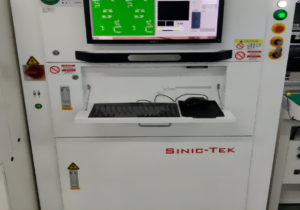
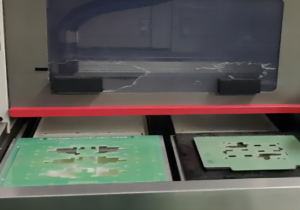
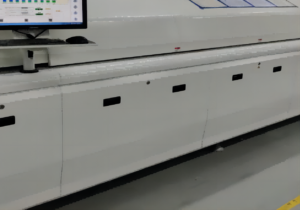
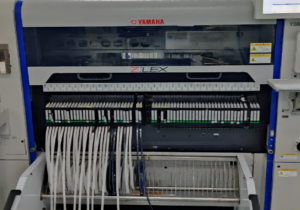
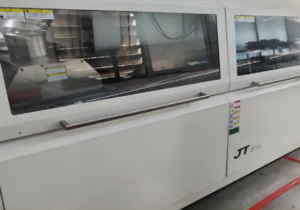
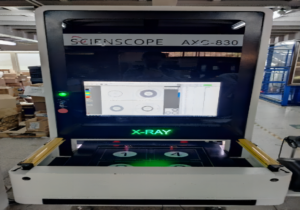

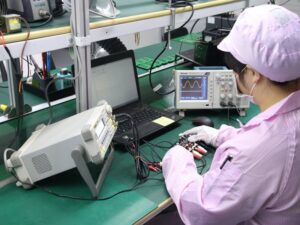

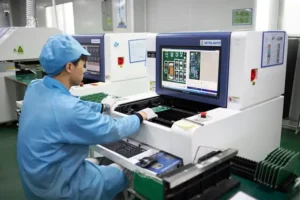



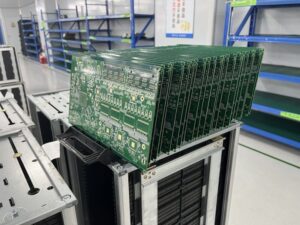

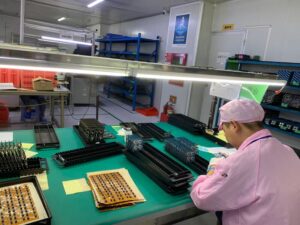



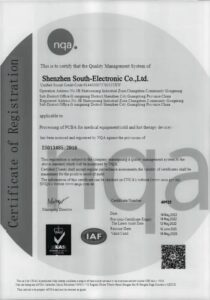
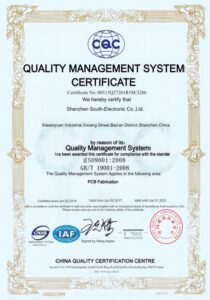









The Complete Guide for Single Layer PCB
Contents
Chapter 1

Introduction to Single Layer PCB
What is a Single Layer PCB?
A Single Layer PCB, also known as a single-sided PCB, is one of the most basic types of printed circuit boards used in various electronic applications. It consists of only one conductive layer of copper, which is applied to one side of the board, while the other side remains unpopulated. These boards are simple in design, making them cost-effective and easy to manufacture compared to multilayer alternatives.
Key Components of a Single Layer PCB
- Substrate: Typically made of FR4, a type of fiberglass, which provides structural support to the board.
- Conductive Copper Layer: This single layer contains the circuit patterns that interconnect the components.
- Solder Mask: Protects the copper traces from short circuits and environmental damage.
- Silkscreen Layer: Used to print component labels, logos, or identifiers to assist in assembly and testing.
Applications of Single Layer PCBs
Single Layer PCBs are commonly used in a wide range of industries, including:
- Consumer Electronics: Remote controls, calculators, and kitchen appliances.
- LED Lighting: Used in low-cost LED light systems due to their simplicity.
- Power Supplies: Simple power distribution systems rely on Single Layer PCBs for efficient operation.
- Automotive Electronics: Some basic automotive circuits and controls use these PCBs for their reliability and cost-effectiveness.
Why Choose Single Layer PCBs?
They’re cheap, easy to design, and fast to make, which makes them great for prototyping and high-volume production, especially for projects that don’t need complex circuitry.
Chapter 2
How Single Layer PCB Work?
Basic Structure of Single Layer PCBs
A Single Layer PCB, as the name implies, has only one conductive layer, usually made of copper. This layer is placed on a non-conductive substrate, usually made of FR4 or similar materials. The conductive layer contains the pathways (also known as traces) that connect electronic components, allowing electricity to flow between them.
How the Conductive Layer Interacts with Components?
All the parts in a Single Layer PCB, like resistors, capacitors, and ICs (integrated circuits), are mounted on the same side as the conductive layer. These parts are soldered right to the copper traces, making electrical connections. When you power it up, the current flows through the conductive pathways, and the circuit does what it’s supposed to do.
Key Roles of the Solder Mask and Silkscreen
- Solder Mask: This green (or sometimes other colored) layer is applied over the copper traces to insulate them and prevent accidental shorts between traces. It ensures that the current flows only where it’s supposed to, while also protecting the board from environmental damage.
- Silkscreen: The silkscreen is used for printing labels and markings on the PCB to guide the assembly process, indicating where components should be placed. It makes the board easier to assemble and troubleshoot.
Functionality in a Circuit
Once all the parts are connected with the copper lines, the Single Layer PCB acts as the backbone of the electronic device, allowing the flow of electricity to power different functions. In simpler devices, one layer of conductive copper is enough to handle all the circuits needed, which makes this type of PCB perfect for cost-sensitive applications.

Chapter 3

Common Applications of Single Layer PCB
Single Layer PCBs are widely used in a variety of industries due to their simplicity, cost-effectiveness, and ease of production. Below are some of the most common applications across different sectors.
1. Consumer Electronics
Single Layer PCBs are heavily utilized in everyday consumer devices due to their affordability and straightforward design. Common examples include:
- Remote Controls: The simple circuitry needed to transmit signals to TVs or other devices is perfectly suited for Single Layer PCBs.
- Household Appliances: Devices like coffee makers, blenders, and microwave ovens use these PCBs for controlling basic functions.
- Toys: Battery-operated toys often rely on Single Layer PCBs to manage their power distribution and motor control.
2. LED Lighting Systems
Single Layer PCBs are commonly found in LED lighting systems due to their efficient heat dissipation and low cost:
- LED Light Bulbs: Many energy-efficient LED bulbs use Single Layer PCBs to mount the diodes and manage the electrical connections.
- LED Displays: Large-scale LED displays and signage systems take advantage of the simple structure of these PCBs for reliable performance in high-volume production.
3. Power Supplies
Single Layer PCBs play a critical role in power supply units, providing stable circuits for a wide range of devices:
- Chargers and Adapters: The internal circuits of power adapters for mobile phones, laptops, and other devices are often based on Single Layer PCBs.
- Uninterruptible Power Supplies (UPS): These PCBs are used in basic power supply circuits to manage energy distribution in low-cost UPS systems.
4. Automotive Electronics
Although many automotive electronics require complex circuitry, some simpler systems rely on Single Layer PCBs:
- Car Audio Systems: Single Layer PCBs are often used in automotive audio systems for managing basic signal processing.
- Dashboard Indicators: Simpler circuit designs for dashboard indicators, such as lights and gauges, frequently use these cost-effective PCBs.
5. Industrial Applications
In industries where simplicity and reliability are crucial, Single Layer PCBs serve well for basic automation and control systems:
- Industrial Relays: These devices often use Single Layer PCBs to manage electrical signals for switching systems.
- Sensors: Basic sensors that detect environmental factors such as temperature or pressure can efficiently operate on Single Layer PCBs.
6. Low-Cost Wearable Devices
In the expanding market of wearable technology, cost-efficiency is a priority for mass production:
- Fitness Trackers: Single Layer PCBs are used in some affordable fitness trackers to control sensors and data transmission.
- Smartwatches: Certain low-end smartwatches and wearables rely on Single Layer PCBs for basic circuit operations.
Chapter 4
Benefits of Using Single Layer PCB
Single Layer PCBs are a popular choice for many electronic devices due to their simplicity and practical benefits. Here are the key advantages of using Single Layer PCBs:
1. Cost-Effectiveness
One of the biggest advantages of Single Layer PCBs is that they’re cheap. Because they only have one layer of conductive material, they’re less expensive to make than double-sided or multilayer PCBs. This makes them perfect for projects on a tight budget and for high-volume manufacturing.
- Lower Material Costs: With fewer layers and components, material expenses are significantly reduced.
- Reduced Manufacturing Time: Single Layer PCBs take less time to manufacture, translating into lower production costs.
2. Simplicity in Design
Single Layer PCBs are easier to design than more complex multilayer boards, making them suitable for straightforward circuits.
- Straightforward Circuit Layout: The design process is simpler because all components are connected on a single side, reducing design time.
- Fewer Routing Challenges: Designers face fewer challenges when routing connections, as they only need to consider one layer.
3. Ease of Manufacturing
With fewer components and simpler layouts, Single Layer PCBs are easier to manufacture, leading to faster production times and higher reliability.
- Efficient Production: The production process is streamlined due to the board’s simple structure, allowing manufacturers to produce large quantities quickly.
- Lower Risk of Manufacturing Errors: The simplicity of the design reduces the chance of errors during production, resulting in higher-quality products.
4. Ideal for Prototyping
When speed and cost are critical, Single Layer PCBs are perfect for rapid prototyping.
- Quick Turnaround: Prototypes can be produced quickly, allowing engineers to test and refine their designs without long delays.
- Cost-Effective for Prototypes: For initial testing, Single Layer PCBs offer a low-cost solution before moving to more complex designs.
5. Better Thermal Management
In certain applications, Single Layer PCBs offer effective heat dissipation, especially in devices like LED lights and power supplies.
- Improved Heat Dissipation: With fewer layers, heat can escape more easily, making these PCBs suitable for devices that generate low to moderate heat.
- Reduced Risk of Overheating: This is particularly advantageous in LED lighting and power management systems where overheating can damage components.
6. Reliability in Simple Circuits
For applications that don’t require complex circuitry, Single Layer PCBs provide a reliable, durable solution.
- Fewer Points of Failure: With only one layer of circuitry, there are fewer connections that could fail, resulting in higher reliability for simple devices.
- Stable Performance: Single Layer PCBs perform consistently in applications where complex designs aren’t necessary.
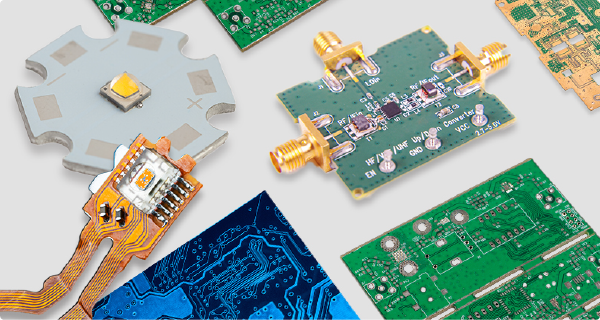
Chapter 5

Materials Used in Single Layer PCB
When it comes to Single Layer PCBs, the materials used in their construction are a big deal. Every component has a role to play in making sure the board works the way it should. In this article, we’ll look at the main materials you’ll find in Single Layer PCBs and how they affect performance.
1. Copper
Copper is the main conductive material used in Single Layer PCBs. It forms the traces or pathways that carry electrical signals between components.
- Conductivity: Copper is an excellent conductor of electricity, making it ideal for creating efficient electrical connections.
- Thickness Options: The copper layer can vary in thickness, typically measured in ounces per square foot. Thicker copper layers improve current-carrying capacity, which is beneficial for high-power applications.
- Durability: Copper provides durability to the PCB, allowing it to withstand environmental stresses such as heat and humidity.
2. FR4 (Fiberglass Epoxy Resin)
FR4 is the most common substrate material used in Single Layer PCBs. It acts as the non-conductive core that the copper traces are laid on.
- Mechanical Strength: FR4 provides excellent mechanical support, ensuring the PCB retains its structure even under mechanical stress.
- Insulation: The fiberglass material offers great insulation, preventing electrical shorts between components.
- Fire Resistance: FR4 is flame-retardant, providing safety in applications where heat or sparks may occur.
3. Solder Mask
The solder mask is like a shield that goes over the copper traces to keep them from touching each other and to protect them from the environment.
- Insulation: It helps insulate the copper traces from accidental contact, reducing the risk of short circuits.
- Heat Resistance: The solder mask also protects the copper from heat during soldering and daily operation, extending the lifespan of the PCB.
- Color Coding: While green is the most common color, solder masks can come in various colors to help differentiate between different PCBs or enhance aesthetics.
4. Silkscreen
The silkscreen is an ink layer used to print labels, logos, and component identifiers on the PCB surface.
- Component Identification: It helps in identifying the placement and orientation of components, making assembly and troubleshooting easier.
- Customization: The silkscreen layer allows for branding or instructional information, enhancing the usability and professionalism of the PCB.
5. Aluminum (Alternative to FR4)
In some applications, particularly those requiring better heat dissipation, aluminum is used instead of FR4 as the substrate material.
- Heat Dissipation: Aluminum substrates offer superior heat dissipation, making them ideal for high-power applications like LED lighting.
- Lightweight and Durable: Aluminum PCBs are both lightweight and durable, which is beneficial for applications requiring strong but light components.
6. Other Insulation Materials
Besides FR4, other materials such as CEM (Composite Epoxy Material) are used in specific applications.
- Cost Efficiency: CEM is often used as a more cost-effective alternative to FR4 in low-budget projects.
- Varied Performance: While not as robust as FR4, CEM offers decent insulation and is suitable for less demanding applications.
Impact of Material Selection on PCB Performance
- Electrical Performance: The thickness and purity of the copper layer directly influence how efficiently the PCB can carry electrical signals, impacting the performance of high-power applications.
- Thermal Management: Substrates like aluminum are chosen when better heat dissipation is required, helping to prevent overheating in high-power devices like LEDs or power supplies.
- Mechanical Strength: The choice of substrate, whether FR4 or aluminum, determines how well the PCB can withstand mechanical stress, vibrations, and environmental factors.
- Cost Considerations: While FR4 is widely used due to its balance of performance and cost, aluminum and other substrates might be chosen for specific performance needs, even if they increase costs.
Chapter 6
Designing a Single Layer PCB
Designing a Single Layer PCB is a critical process that requires attention to detail to ensure functionality and efficiency. Below is a step-by-step guide to help you through the design process, along with essential tips for layout, routing, and component placement.
1. Define the Circuit Requirements
Before starting the design, it’s essential to have a clear understanding of the circuit’s purpose and requirements.
- Identify the Components: List all the components (resistors, capacitors, ICs, etc.) that your circuit will need.
- Determine Power and Signal Requirements: Understand how much power the circuit will need and identify key signal paths to ensure proper routing later.
2. Schematic Creation
The next step is to create a schematic diagram that visually represents how each component is connected.
- Use Schematic Software: Tools like Altium Designer or KiCad can help you draw the schematic and automatically generate a netlist.
- Double-Check Connections: Make sure that all the connections between components are accurate to avoid errors during the PCB design phase.
3. Component Placement on the PCB
Once the schematic is ready, begin placing components on the board.
- Prioritize Key Components: Start by placing the most important components, like the microcontroller or power supply, in strategic positions.
- Consider Functionality: Keep related components close together to reduce the length of signal traces and minimize interference.
- Leave Space for Routing: Make sure there’s enough space between components for routing the copper traces.
4. PCB Layout Design
Designing the layout involves determining the size and shape of the PCB and where the components and traces will be located.
- Set the Board Size: Based on your project’s requirements, set the dimensions of the PCB. Keep it as small as possible to reduce costs but large enough to accommodate all components and traces.
- Organize Layers: In a Single Layer PCB, all traces and components are placed on one side, so make efficient use of the space.
5. Routing the Traces
Routing is the process of connecting the components via copper traces that carry electrical signals.
- Keep Traces Short and Direct: The shorter the trace, the less resistance and interference it will have. Aim for direct connections when possible.
- Use Proper Trace Widths: Thicker traces are required for higher current paths, while signal traces can be narrower. Use trace width calculators to ensure proper sizing.
- Avoid 90-Degree Angles: Instead of sharp 90-degree turns, use 45-degree angles for smoother routing. This reduces electrical resistance and improves signal integrity.
6. Ground Plane and Power Distribution
Efficient grounding and power distribution are crucial for the performance of your PCB.
- Use a Solid Ground Plane: In many designs, it’s advisable to create a solid ground plane to minimize noise and reduce electromagnetic interference (EMI).
- Power Traces: Ensure that power traces are wide enough to carry the necessary current without overheating or causing voltage drops.
7. Adding the Silkscreen
The silkscreen is used for labeling the components and other information on the PCB surface.
- Label Key Components: Clearly label the placement of important components to assist in assembly and troubleshooting.
- Include Reference Marks: Add reference designators (R1, C1, U1, etc.) to ensure that components are placed correctly during the assembly process.
8. Design Rule Check (DRC)
Before finalizing your design, run a design rule check to ensure everything is in order.
- Check for Errors: DRC software will help you identify potential issues like trace spacing, clearance violations, or unrouted nets.
- Correct Any Violations: Make sure to resolve any errors flagged by the DRC before moving forward.
9. Export Gerber Files
Once the design is complete and the DRC is passed, the next step is to export the Gerber files.
- What are Gerber Files?: Gerber files are the industry-standard file format used for PCB fabrication, containing all the necessary information about the board layout.
- Send to Manufacturer: Once exported, these files are sent to your PCB manufacturer to begin production.
10. Prototype and Test
Before mass production, it’s crucial to create a prototype to test the functionality of your PCB.
- Order a Prototype: Manufacturers like South-Electronic can produce a small batch of prototypes to ensure the design works as intended.
- Test the Circuit: Run electrical tests to verify that all components are functioning correctly and that the board performs as expected.
11. Iterate Based on Feedback
If the prototype reveals any issues, make the necessary changes to the design.
- Identify Areas for Improvement: Adjust trace routing, component placement, or other aspects of the design as needed based on testing results.
- Finalizing the Design: After successful prototyping, finalize the design for mass production.

Chapter 7

Manufacturing Process of Single Layer PCB
Making Single Layer PCBs involves several key stages, from selecting the right materials to the final assembly. Each step is important in making sure the PCB meets the desired specifications and quality standards. Here is an outline of the main stages involved.
1. Material Selection
The first step in manufacturing a Single Layer PCB is choosing the appropriate materials.
- Substrate Selection: The substrate, usually FR4 or aluminum, provides the structural foundation for the PCB. FR4 is commonly chosen for its durability and insulation properties, while aluminum is used for better heat dissipation.
- Copper Foil: A single layer of copper foil is applied to one side of the substrate. The thickness of the copper layer is selected based on the current requirements of the circuit.
2. Preparing the Substrate
Once the materials are selected, the substrate is prepared for the next steps.
- Cleaning the Substrate: The substrate is cleaned thoroughly to remove any dust, oils, or contaminants that could interfere with the manufacturing process.
- Laminating the Copper Layer: The copper foil is laminated onto the substrate using heat and pressure, ensuring a strong bond between the two materials.
3. Applying the Photoresist
The next step is to apply a light-sensitive material known as photoresist to the copper surface.
- Coating the Copper: The copper layer is coated with a thin layer of photoresist, which will be used to create the circuit pattern.
- UV Exposure: A photographic mask with the circuit design is placed over the PCB, and ultraviolet (UV) light is shone onto the board. The areas exposed to UV light harden, while the unexposed areas remain soft.
4. Developing the PCB
After UV exposure, the PCB is developed to reveal the circuit pattern.
- Removing the Soft Photoresist: A chemical solution is used to remove the soft, unexposed photoresist, leaving only the hardened areas that form the circuit design.
- Circuit Pattern Revealed: The copper areas covered by hardened photoresist remain intact, while the exposed copper will be etched away in the next step.
5. Etching the Copper
Etching is the process of removing unwanted copper to create the circuit traces.
- Chemical Etching: The PCB is submerged in an etching solution (typically ferric chloride or ammonium persulfate), which dissolves the exposed copper, leaving behind the copper traces that form the circuit.
- Rinsing the PCB: Once etching is complete, the board is rinsed to remove any remaining chemicals.
6. Removing the Photoresist
The hardened photoresist that protected the copper traces during etching is now removed.
- Stripping the Photoresist: A chemical solution is used to strip away the hardened photoresist, revealing the clean copper traces underneath.
- Final Inspection: The board is inspected to ensure that the copper traces are correct and free from defects.
7. Solder Mask Application
The solder mask is applied to protect the copper traces and prevent short circuits during component assembly.
- Applying the Solder Mask: A layer of solder mask is applied over the entire board, leaving exposed areas where components will be soldered.
- Curing the Solder Mask: The PCB is exposed to heat or UV light to cure the solder mask, making it durable and protective.
8. Silkscreen Printing
A silkscreen layer is printed on the PCB to indicate component placement and provide other important markings.
- Labeling Components: The silkscreen layer helps identify the location and orientation of components, making the assembly process easier.
- Custom Markings: Additional details, such as logos, labels, or instructions, can also be added to the silkscreen.
9. Drilling and Plating
If the PCB requires holes for mounting or through-hole components, drilling is performed at this stage.
- Drilling Holes: Precision drilling machines are used to create holes in the PCB for components such as resistors, capacitors, and connectors.
- Plating the Holes: In some cases, the drilled holes are plated with copper to provide electrical connections between different layers or sides of the board.
10. Component Assembly
Once the board is ready, we put the parts on.
- Surface Mount Technology (SMT): In Single Layer PCBs, components are often mounted using SMT, where components are placed directly onto the board’s surface.
- Through-Hole Mounting: For larger or more robust components, through-hole mounting may be used, where component leads are inserted into drilled holes and soldered on the opposite side.
- Soldering the Components: Components are soldered onto the board either manually or using automated soldering techniques like reflow or wave soldering.
11. Final Inspection and Testing
After assembly, the PCB undergoes final inspections and testing to ensure it functions correctly.
- Electrical Testing: The PCB is tested for electrical continuity, short circuits, and proper component functionality.
- Visual Inspection: The board is visually inspected to ensure that all components are correctly placed and soldered, and that there are no visible defects.
- Packaging: Once the board passes inspection, it is packaged and prepared for shipment to the customer.
Chapter 8
Quality Control in Single Layer PCB Production
Quality control is a crucial aspect of producing Single Layer PCBs to ensure that they perform reliably and meet customer expectations. Manufacturers implement strict quality control measures, including thorough testing methods and compliance with international certifications. In this article, we will discuss how quality control is maintained during the production of Single Layer PCBs.
1. Initial Material Inspection
Quality control begins with a thorough inspection of raw materials before production.
- Substrate and Copper Inspection: The substrate material (e.g., FR4 or aluminum) and copper foil are inspected for any defects such as cracks, impurities, or inconsistencies in thickness.
- Certification Verification: All incoming materials are checked to ensure they meet the required standards, such as UL or CE certification, to guarantee safety and performance.
2. Design Rule Check (DRC)
Before physical production begins, manufacturers run a design rule check (DRC) to verify that the PCB design meets production specifications.
- Trace Spacing and Width: The DRC ensures that all copper traces meet the required spacing and width specifications to prevent short circuits or overheating.
- Component Placement Validation: The check also ensures that components are placed in appropriate positions to avoid conflicts during assembly and to meet design constraints.
3. Automated Optical Inspection (AOI)
After the PCB has been manufactured but before components are assembled, Automated Optical Inspection (AOI) is used to detect any visual defects.
- Surface Defects Detection: AOI machines scan the PCB for any surface defects such as missing traces, misalignments, or incomplete etching.
- Trace and Pad Accuracy: AOI ensures that all copper traces and component pads are accurately positioned and meet design specifications.
4. Electrical Testing
Electrical testing is one of the most critical stages of quality control, ensuring that the PCB operates correctly.
- Continuity Testing: Continuity tests verify that all electrical connections are properly formed, ensuring that current can flow through the entire circuit without interruption.
- Short Circuit Testing: The PCB is tested to ensure there are no unintended short circuits that could cause malfunction or failure in the final product.
- Functional Testing: In more advanced stages, functional testing may be performed to simulate the operating environment and ensure the PCB performs as intended under real-world conditions.
5. Solderability Testing
Solderability testing ensures that the PCB’s copper pads and component leads are properly soldered during the assembly process.
- Solder Mask Integrity: The solder mask is checked to ensure it is properly applied and free from defects that could interfere with the soldering process.
- Component Attachment: Testers verify that components are securely attached to the PCB, ensuring they won’t come loose or cause failures in operation.
6. Environmental and Durability Testing
To guarantee the PCB will function in various conditions, manufacturers may conduct environmental tests.
- Temperature Cycling: The PCB is subjected to extreme temperature changes to test its resistance to thermal stress, which is important for products operating in fluctuating environments.
- Vibration and Shock Testing: The board is tested for durability under vibration or physical impact to ensure it can withstand the demands of real-world usage, especially in industries like automotive or industrial equipment.
7. Certification Compliance
Manufacturers must adhere to industry standards and certifications to guarantee product safety, quality, and performance.
- UL Certification: Underwriters Laboratories (UL) certification ensures that the PCB meets safety standards for electrical performance and fire hazards.
- CE Marking: For products sold in the European market, CE certification is essential. It confirms that the PCB complies with health, safety, and environmental protection standards.
- ISO13485 Certification: This certification is especially important for medical device PCBs, ensuring that the production process meets rigorous quality standards required for medical equipment.
- IATF16949 Certification: This certification ensures that the PCB manufacturing process complies with the strict standards of the automotive industry, addressing quality management and production consistency.
8. Final Inspection
Before shipping, a final inspection ensures that the PCB is free from defects and meets all customer requirements.
- Visual Inspection: Technicians perform a detailed visual check for any remaining defects, ensuring the board is clean, properly marked, and ready for assembly.
- Dimensional Accuracy: Measurements are taken to ensure that the PCB fits the specified dimensions and will fit correctly in its intended application.
9. Packaging and Shipment
Proper packaging is crucial to maintaining the integrity of the PCB during transportation.
- Protective Packaging: PCBs are packaged in anti-static materials to prevent damage from electrostatic discharge during transit.
- Labeling and Documentation: Each shipment includes proper labeling and documentation to ensure traceability and that the product meets the required certifications.

Chapter 9

Single Layer PCB vs. Multilayer PCB
When deciding between a Single Layer PCB and a Multilayer PCB, it’s important to consider several key factors such as cost, design complexity, and intended application. Both types have distinct advantages, and the right choice depends on the requirements of your project. Below is a detailed comparison to help clarify the differences.
1. Number of Layers
- Single Layer PCB: As the name suggests, a Single Layer PCB has only one layer of conductive copper on one side of the board. All components and circuits are placed on this single conductive layer.
- Multilayer PCB: Multilayer PCBs consist of two or more conductive copper layers, with insulating material between each layer. Components can be placed on both sides, and internal layers are used for additional circuitry.
2. Cost
- Lower Cost for Single Layer PCB: Due to the simplicity of its design, Single Layer PCBs are much more cost-effective to produce. The single conductive layer reduces the need for complex manufacturing processes, making it the more affordable option.
- Higher Cost for Multilayer PCB: Multilayer PCBs are more expensive due to the complexity involved in layering and connecting multiple copper layers. The materials and precision required during the manufacturing process drive up production costs, especially for high layer counts.
3. Design Complexity
- Simple Design for Single Layer PCB: The design of a Single Layer PCB is straightforward because all components and connections are placed on one side. This makes it easier to design and less prone to routing errors. It is ideal for simpler circuits with fewer components.
- More Complex Design for Multilayer PCB: Multilayer PCBs are far more complex, as they require careful planning for routing traces across multiple layers. This allows for higher component density and more intricate designs but requires more expertise in design and layout.
4. Size and Space Efficiency
- Larger Size for Single Layer PCB: Since a Single Layer PCB has only one layer for routing, it typically requires more surface area to accommodate all components and traces. This can lead to a larger board size for more complex circuits.
- Compact Size for Multilayer PCB: Multilayer PCBs allow for higher component density because traces and components can be distributed across multiple layers. This enables more compact designs, making them ideal for devices where space is limited, such as smartphones and tablets.
5. Performance and Functionality
- Basic Functionality for Single Layer PCB: Single Layer PCBs are best suited for low-density designs where basic functionality is required. They perform well in simple applications but may struggle with more advanced, high-performance needs.
- High Performance for Multilayer PCB: Multilayer PCBs can handle much more complex circuits, offering better performance for devices that require high-speed signals, advanced data processing, or high power handling. The additional layers provide greater routing flexibility and signal integrity.
6. Applications
- Single Layer PCB Applications: Single Layer PCBs are widely used in simpler, cost-sensitive products. Common applications include:
- Consumer electronics such as remote controls and calculators.
- LED lighting systems.
- Power supplies and low-cost automotive electronics.
- Household appliances like coffee makers and toasters.
- Multilayer PCB Applications: Multilayer PCBs are used in more advanced and high-performance devices, including:
- Smartphones and tablets.
- Computers and laptops.
- Medical devices that require precise, high-speed circuitry.
- Aerospace and military systems that demand high reliability and complexity.
7. Thermal Management
- Basic Heat Dissipation for Single Layer PCB: Single Layer PCBs, especially those made with aluminum substrates, offer decent heat dissipation. However, their thermal management capabilities are limited for higher power applications.
- Better Heat Dissipation for Multilayer PCB: Multilayer PCBs typically offer better heat management, especially if heat sinks or specialized cooling techniques are integrated into the design. This makes them more suitable for high-power applications where thermal performance is critical.
8. Signal Integrity and Noise Reduction
- Limited Signal Integrity in Single Layer PCB: With only one layer for routing, Single Layer PCBs may experience more signal interference and crosstalk, particularly in more complex circuits.
- Improved Signal Integrity in Multilayer PCB: Multilayer PCBs offer enhanced signal integrity because dedicated layers can be used for grounding and power distribution, reducing interference and improving performance for high-speed signals.
9. Assembly and Prototyping
- Easier Assembly for Single Layer PCB: With a simpler design and fewer components to manage, Single Layer PCBs are quicker and easier to assemble. They are also easier to prototype, making them ideal for testing new designs.
- More Complex Assembly for Multilayer PCB: Multilayer PCBs require specialized equipment and more intricate assembly processes, which can increase production time. Prototyping multilayer boards is also more complex and costly compared to single layer options.
10. Repair and Maintenance
- Easier to Repair Single Layer PCB: Single Layer PCBs are easier to troubleshoot, repair, and maintain because all components and traces are accessible on one side. This makes them ideal for applications where ease of maintenance is a priority.
- Challenging to Repair Multilayer PCB: Due to their complexity and multiple layers, Multilayer PCBs are much harder to repair. Damage to internal layers may require complete board replacement, increasing downtime and repair costs.
Chapter 10
Choosing the Right Single Layer PCB Supplier
Selecting the right Single Layer PCB supplier is critical to ensuring the success of your project. A reliable supplier will offer high-quality products, flexibility in production, and exceptional customer support. Below is a guide to help you identify the key factors to consider when choosing a Single Layer PCB supplier.
1. Quality Standards and Certifications
The quality of the PCBs should be your top priority when selecting a supplier. A supplier with strong quality control measures will ensure that every PCB meets your specifications.
- ISO, UL, and CE Certifications: Look for suppliers that adhere to international quality certifications such as ISO9001, UL, and CE. These certifications guarantee that the manufacturing process meets high industry standards.
- Testing Capabilities: Ensure the supplier offers thorough testing methods, such as Automated Optical Inspection (AOI), electrical testing, and functional testing, to verify that the PCBs perform as intended.
2. Manufacturing Capabilities
A supplier’s manufacturing capabilities will determine whether they can meet your production requirements and handle both small and large orders efficiently.
- Capacity for Small and Large Orders: Check if the supplier can handle both low-volume orders for prototypes and high-volume orders for mass production. Flexibility in order size can save you time and cost in the long run.
- Advanced Technology: Verify if the supplier uses modern manufacturing equipment and technology, which can improve the accuracy and efficiency of PCB production.
- Lead Time: Ensure the supplier can meet your project deadlines by offering fast turnaround times for both prototyping and bulk production.
3. Customization Options
Your project may require specific design elements or unique features that not all suppliers can provide. A good supplier should be able to offer custom solutions.
- Design Flexibility: Look for a supplier who can handle custom PCB designs, such as specific dimensions, unique shapes, or non-standard materials (e.g., aluminum substrates for better heat dissipation).
- Prototyping Services: If you need to test your design before full-scale production, choose a supplier who offers quick and affordable prototyping services.
4. Cost-Effectiveness
While quality is paramount, you also need to consider cost, especially if you’re working on a budget. The best suppliers offer a balance between price and performance.
- Competitive Pricing: Compare prices from different suppliers to ensure you’re getting the best value for your money. Be wary of prices that seem too low, as they may indicate compromised quality.
- Transparency: Look for a supplier who provides transparent pricing with no hidden fees. Ensure that you understand the cost breakdown, including material costs, assembly fees, and shipping charges.
5. Customer Support and Communication
Effective communication and excellent customer service are key indicators of a reliable supplier. A supplier who values clear communication will ensure your project runs smoothly from start to finish.
- Responsive Support Team: A reliable supplier will have a dedicated support team that is easy to reach and quick to respond to any inquiries or issues.
- Technical Expertise: The supplier’s team should have the technical expertise to assist with any design or manufacturing challenges, providing guidance throughout the process.
- After-Sales Support: Ensure the supplier offers after-sales services, including warranty coverage and support for troubleshooting any issues that arise after delivery.
6. Production Location and Shipping
Where the supplier is based can affect both production times and shipping costs. Consider whether you need a local supplier or if an international supplier would be more cost-effective.
- Location: Local suppliers may offer faster shipping times, while overseas suppliers might provide more competitive pricing for high-volume orders.
- Global Shipping Options: Choose a supplier that can offer reliable global shipping, especially if your business operates across multiple countries. Ensure that they have experience with international shipping regulations and logistics.
7. Reputation and Reviews
The supplier’s reputation can provide valuable insights into their reliability and the quality of their products.
- Customer Reviews and Testimonials: Look for customer reviews or testimonials from previous clients. Positive feedback on quality, delivery times, and customer service can give you confidence in the supplier’s abilities.
- Industry Experience: Suppliers with a proven track record in the PCB industry are more likely to deliver consistent quality. Check how long the supplier has been in business and whether they have experience with projects similar to yours.

Get in touch
Where Are We?
Industrial Park, No. 438 Donghuan Road, No. 438, Shajing Donghuan Road, Bao'an District, Shenzhen, Guangdong, China
Floor 4, Zhihui Creative Building, No.2005 Xihuan Road, Shajing, Baoan District, Shenzhen, China
ROOM A1-13,FLOOR 3,YEE LIM INDUSTRIAL CENTRE 2-28 KWAI LOK STREET, KWAI CHUNG HK
service@southelectronicpcb.com
Phone : +86 400 878 3488
Send us a message
The more detailed you fill out, the faster we can move to the next step.



